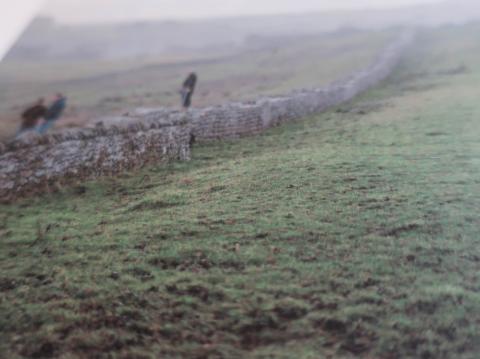The decline and fall of the Roman Empire

Trevi Fountain in Rome (1762) made famous by Frank Sinatra’s song, “Three Coins in the Fountain,” (1953). The water was supplied by aqueduct built in first century. photo by F. Sharp
Figure 1
The dramatic phase “the fall of the Roman Empire” is a misnomer and is in fact a shorthand for the long, slow process for the exchange of one lifestyle for another. The Roman Empire had 100 years of peace called the Pax Romana — then the lull before the storm.
(Harrison, 1965) The most pressing problem of the third century was that of imperial succession. During the period of the “good emperors” (A.D. 90-180) each ruler had chosen an able, experienced man to succeed him.
Marcus Aurelius repudiated that principle by selecting his son Commodus (A.D. 180-192) who was completely unfit to be emperor. He spent most of his time training gladiators and neglecting defenses, finances, and sound administration. When protests were raised he brutally silenced them. He was murdered by the Praetorian Guard. From that point on the army and its ambitious generals dominated Roman politics.
(Harrison, 1965) For the next 100 years political turmoil rocked the empire as ambitious generals, one after another, seized power in a 50-year rash of civil wars wherein at least 26 emperors reigned, but only one died of natural causes. Civil war had replaced the Pax Romona of the second century Rome.
The position of emperor soon became the prize to be awarded to the “highest bidder.” At the same time, the empire was suffering from a plague that lasted 15 years and reduced the population in half!
Even though he had no Rose Garden, Diocletian liked to increase the prestige of the emperor’s court by surrounding himself with elaborate ceremonies. He wore a purple robe embossed with gold and a crown of jewels. Anyone who approached the throne had to kneel and kiss the hem of the emperor’s robe. He doubled the size of his army. The cities were now decimated (Black, 2000) by the plagues (smallpox, malaria, influenza, diphtheria, cholera, tuberculosis and the most feared of all, leprosy).
There had been a climate change in the Asian steppes which had forced the Huns to find new pastures for their herds. They tried to enter China but were turned back by soldiers and the Great Wall, and then Germanic barbaric tribes rushed into Rome territory to escape Attila and his horde.
figure 2
Likewise, Hadrian built his 78-mile wall (A.D. 122-125) to keep out the wild Scots from northern territories. He codified Roman law and made it uniformly the same in all provinces. Diocletian had divided the Empire into the East and the West which weakened it, but it was at once a great weakness and strength at the same time. There were frequent political differences between the two halves and they did not come to the aid of each other when attacked. (Corchado, 1997) Perhaps, most important, dividing the empire when it was under severe attack may have weakened it beyond repair.
Figure 3
(Wilkinson, 1991) The backbone of the empire was its cities. It was from here that the middle class provided (Boak, 1963) the bulk of men to run the civil service and the law. When the invasions occurred in the third century, the cities were left in disrepair. It became their main concern to rebuild the city walls and look after their own interests. This had the effect of polarizing the cities into very poor and very rich with few in between. Now the empire was split into an East and West Empire.
Figure 4
(Boak, 1963) The Germans had no cities — they lived in tents far apart from each other and had caves where they hid their food and sought shelter from storms. (Tacitus) (Harrison, 1965) The Germans possessed no written language. They were called barbarians since they were uneducated and didn’t speak or write Greek or Latin.
Constantine (A.D. 306-37) moved his capitol from Rome to Byzantium. Rome, “the eternal city,” was sacked in 410 by the first foreign army to take the city in 800 years! (Hyslop)
Once a world capital and home to perhaps a million people, Rome eventually shrank until the city contained a population of only about 17,000 residents. Cows grazed where Julius Caesar had once reigned supreme. (Davies, 1998) This period of decline was later called the “Dark Ages”.
Other factors contributing to its decline was poisoning from lead pipes that carried water into the Roman homes. Economic conditions worsened as people moved to the cities and left the slaves to work the farms. Trade decreased and many city workers lived in poverty. (Harrison, 1965)
The final chapter of the dissolution of the fifth century Roman Empire was the strengthening of the Christian faith and its place as the official religion of the state by Constantine.
(Burke, 2020) Toynbee and James Buke argue that the Roman Empire was rotten from its inception and that the imperial system was one of steady decay of institutions founded in Republican times. The Romans had no budgetary system and thus wasted whatever resources they had available.
Author Frank Sharp
- Log in to post comments

